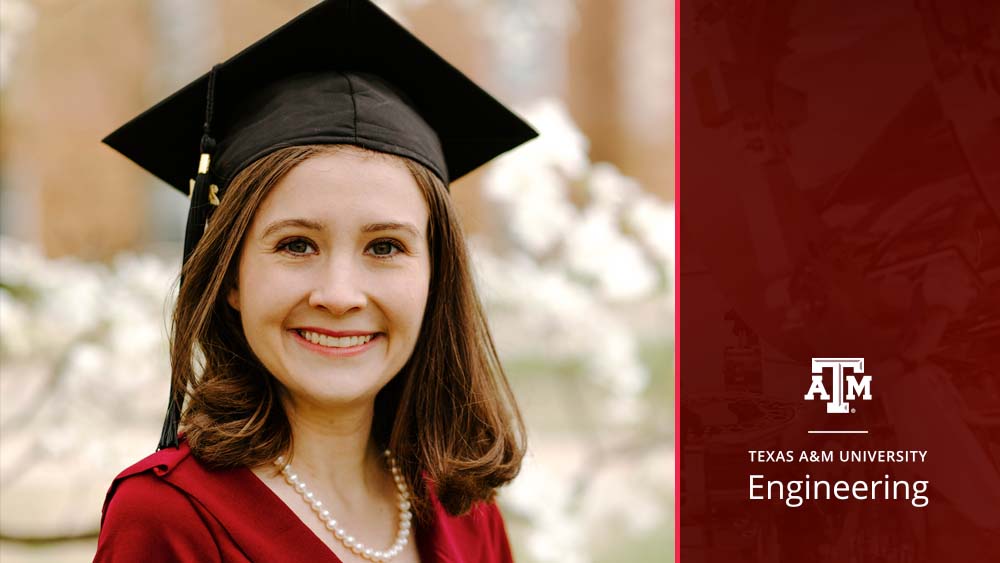
First-year biomedical engineering doctoral student Elizabeth Bullard expected to hear whether she’d made it into the National Science Foundation's (NSF) Graduate Research Fellowship Program (GRFP) from the foundation. However, as an additional surprise, the first email she saw didn't come from the NSF but rather from her new principal investigator, Dr. Kristen Maitland.
"She emailed me saying, 'Congratulations! I was going to call you, but it's eight in the morning," Bullard said. "It was such a shock. I think it's going to be really great."
Bullard will join the Department of Biomedical Engineering at Texas A&M University in fall 2021 with a focus on optics and imaging. She said her interest in imaging likely sprung from a general fascination for cameras. That soon took on a biomedical theme with a bioinstrumentation course in college.
"I took an advanced course in microscopy," Bullard said. "That was really cool to dive more into biomedical applications of imaging, so different types of microscopes. And then you learn about all the imaging instruments they use in the hospitals — ultrasounds, MRIs — you think about where do they come from. The doctors and the nurses don't have time to build those things, so who was the mind behind all that?"
Bullard also received the 2021 National Excellence Fellow position, a department initiative to support students who intend to pursue translational research that impacts the biomedical engineering industry.
Biomedical engineering at Texas A&M appealed to her due to the number of faculty who focus on imaging research. Bullard's research in her undergraduate years focused on imaging in the intestinal system. Her first project used a miniaturized diffuse reflectance spectroscopy probe, a device that allows researchers to measure tissue properties noninvasively. Bullard's device was specially built to be threaded through a veterinary endoscope to monitor physiological values of the blood — oxygenation and hemoglobin content —in the colon for monitoring cancer.
She also applied the technology to ulcerative colitis, an autoimmune intestinal disease. There the measurements detected any signs of healing in the ulcers over time.
"It's such a difficult disease to manage, and I think there's so much more that we can do in that area," Bullard said. "So that's exciting to be able to work on something like that."
Bringing her knowledge to Texas A&M, Bullard's first project will likely involve working with the vet school to create an endoscopic system for imaging nanoparticles in colon cancer.
In the future, she will have more flexibility to choose a topic for her dissertation, thanks to the GRFP. Not only will it support her day-to-day expenses as a graduate student, but the grant also allows her time to begin experimenting on a project independent of external funding.
"It gives me a lot of freedom to work on a project that I want to work on," she said. "If there's no funding for a project I'm interested in, the NSF funding can help me pay for those initial experiments and the data analysis, and then I could submit another funding request."
While Bullard is unsure what path she'd like to take after completing her doctoral degree, she said one dream would be to work for a nonprofit such as Engineering World Health to work in biomedical engineering abroad. One highlight she remembers seeing while touring the University of Arkansas for her undergraduate degree was a senior design project to develop a surgical lamp made out of PVC pipes for a hospital in Africa.
"I thought that was fascinating that they were able to make something that was so low cost and easy maintenance, something that we just take for granted in our high-resource nations," she said. "That got me into more of the global health scene. If there's an opportunity for me to go overseas sometime as a grad student, I think that would be phenomenal."